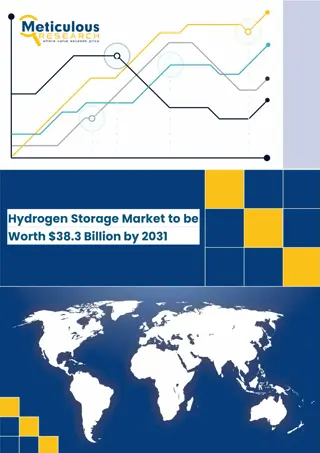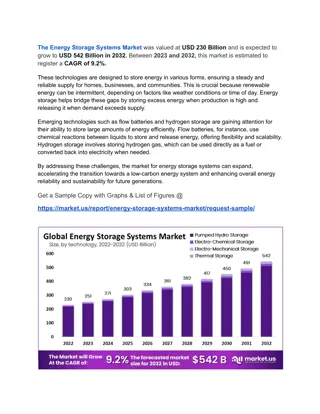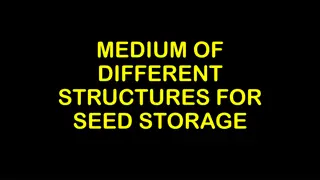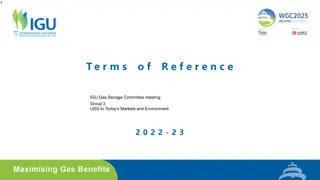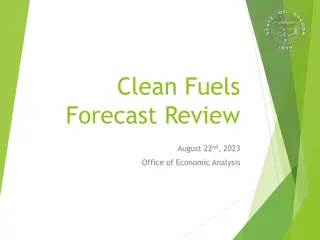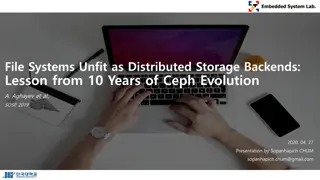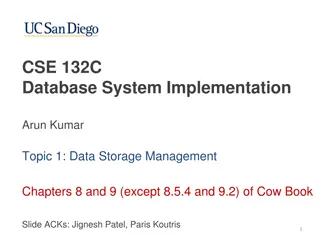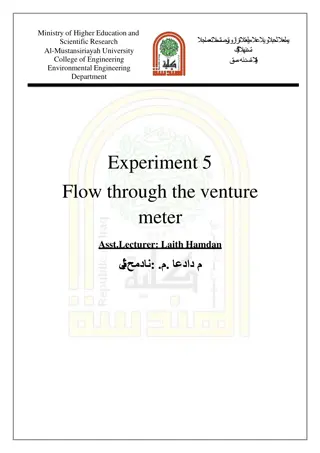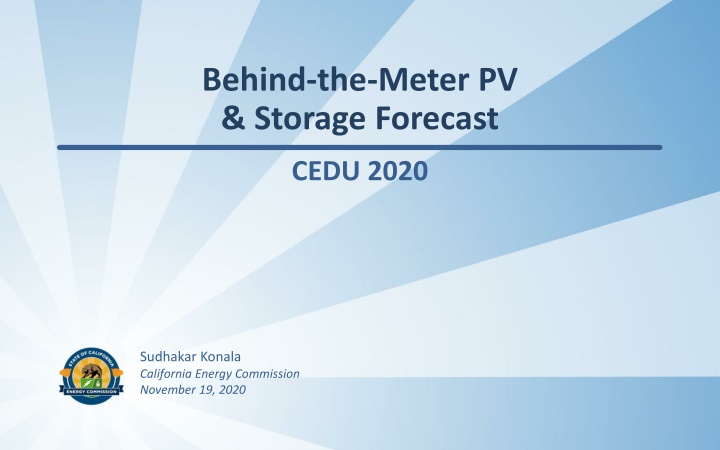
Behind-the-Meter PV & Storage Forecast from CEDU
"The document explores the forecast for behind-the-meter PV and storage by Sudhakar Konala from the California Energy Commission. It offers insights into future trends and developments in the field, providing valuable information for stakeholders in the energy sector to make informed decisions."
Uploaded on | 0 Views
Download Presentation

Please find below an Image/Link to download the presentation.
The content on the website is provided AS IS for your information and personal use only. It may not be sold, licensed, or shared on other websites without obtaining consent from the author. If you encounter any issues during the download, it is possible that the publisher has removed the file from their server.
You are allowed to download the files provided on this website for personal or commercial use, subject to the condition that they are used lawfully. All files are the property of their respective owners.
The content on the website is provided AS IS for your information and personal use only. It may not be sold, licensed, or shared on other websites without obtaining consent from the author.
E N D
Presentation Transcript
Behind-the-Meter PV & Storage Forecast CEDU 2020 Sudhakar Konala California Energy Commission November 19, 2020
Changes in the 2020 Forecast Revisions to historical PV installation data Began to use interconnection data provided by utilities Improved PV system classification Better align with CEC sectors and subsectors Incorporated system tilt / orientation data into PV capacity factors Previously used only one tilt / orientation for all PV systems Refer to August 28th, IEPR workshop for more details on these changes https://efiling.energy.ca.gov/GetDocument.aspx?tn=234487&DocumentContentId=67313 1
BTM PV Capacity Additions Statewide BTM PV Capacity at the end of 2019: > 9,400 MW 2
PV Capacity Additions by Sector Maturing PV market: about 1,300-1,400 MW installed annually 2016-19 3
2020 Data Similar to 2019 New factors affecting solar adoption Drop in the federal ITC (from 30% to 26%) Title 24 PV requirements are now in full effect Pandemic (and the associated economic downturn)? IOU Data through June 30, 2020 Installations similar YoY Not enough data to understand what s happening Source: California Energy Commission analysis of NEM Interconnection Applications data sets. 4
Updates to 2020 PV Forecast Demographic / economic data Household growth Slower compared to 2019 forecast Commercial floorspace Slightly lower growth compared to 2019 forecast GSP Deflator Forecast of Electricity rates Similar to 2019 forecast Included new commercial sector TOU tariffs 5
Energy Commission PV Model Residential and commercial models predict PV penetration based on calculated payback / bill savings. 6
Scenario Definitions High = High Electricity Demand Case High economic / demographic growth high growth in building stock Low electricity rates Low PV adoption Low = Low Electricity Demand Case Low economic / demographic growth low growth in building stock High electricity rates High PV adoption Mid = Mid Electricity Demand Case 7
2020 Statewide BTM PV Forecast 47,300 41,200 34,900 15,800 Source: California Energy Commission. Note: For consistency, 2017 and 2018 forecasts include AAPV forecast results. 8
Self-Generation Forecast Statewide Self-Generation Forecast (Mid-Case) 60,000 > 41,000 GWh 50,000 Forecast Historical 40,000 Generation (GWh) ~15,800 GWh 30,000 20,000 10,000 0 1990 1995 2000 2005 2010 2015 2020 2025 2030 Other BTM PV ~14,000 GWh Source: California Energy Commission. 9
PG&E PV Forecast PV Generation forecast to grow to ~19,000 GWh by 2030 in mid-case 18,900 7,300 NOTE: 2018 forecast includes AAPV forecast results. 11
SCE PV Forecast PV Generation forecast to grow to 14,100 GWh by 2030 in mid-case 14,100 5,100 NOTE: 2018 forecast includes AAPV forecast results. 12
SDG&E PV Forecast PV Generation forecast to increase to 4,500 GWh by 2030 in mid-case 4,500 2,080 NOTE: 2018 forecast includes AAPV forecast results. 13
LADWP PV Forecast PV Generation forecast to grow to ~1,200 GWh by 2030 in mid-case 1,180 516 NOTE: 2018 forecast includes AAPV forecast results. 14
SMUD PV Forecast PV Generation forecast to grow to 1,200 GWh by 2030 in mid-case 1,200 312 NOTE: 2018 forecast includes AAPV forecast results. 15
BTM Energy Storage Adoption No methodological changes since 2019 in forecasting BTM storage adoption Incorporated latest Rule 21 and SGIP storage installation data Storage adoption in 2019 was higher than forecast. Forecast adoption for 2019: Low Demand: ~ 70 MW High Demand: ~ 78 MW Mid Demand: ~ 85 MW Actual 2019: ~ 130 MW SGIP program shows significantly higher number of applications since a year ago. 473 MW of outstanding funding reservations as of 11/02/2020 73 MW of outstanding funding reservation as of 10/21/2019 17
Storage Forecast Results Approach for Forecasting Energy Storage Adoption (by Sector and Scenario) Scenario Residential Non-Res High Demand Trend Analysis Trend Analysis Low Demand % of PV capacity Mid Demand Avg. of High/Low 18
Deployment of BTM Storage Non-residential storage systems Update charge / discharge profiles from the 2018 SGIP Storage Impact Evaluation report (released Jan 2020) www.cpuc.ca.gov/General.aspx?id=7890 The 2019 forecast used the 2017 SGIP Storage Impact Evaluation report Residential storage systems Subject to new SGIP eligible requirements all new residential IOU and non-IOU customers are required to enroll in a time-varying rate with a peak period starting at 4 pm or later and with a summer peak to off-peak price differential of 1.69 or more, if such rate is available www.selfgenca.com/documents/handbook/2020 19
SGIP Approved TOU Rates For the PG&E, SCE, and SDG&E rate tariffs used to model storage deployment in CED 2019 would be ineligible for new SGIP funding. For new residential applications, table below shows SGIP approved tariffs. PG&E SCE SDG&E SMUD CED 2019 E-TOU-C TOU-D-4-9 Residential TOU DR-2 Time of Day (5-8 p.m.) Approved by SGIP Option 1 EV-A Residential TOU-D-Prime Residential TOU DR-1 Time of Day (5-8 p.m.) Option 2 EV-B TOU-EV-1 Residential EV-TOU - Option 3 EV2-A TOU-D-5-8 EV-TOU-2-Residential - Option 4 - - EV-TOU-4 - Source: California Energy Commission, Self-Generation Incentive Program (www.selfgenca.com/home/resources/) SDG&E: option 1 has similar TOU periods as tariff modeled in 2019 will keep residential charge / discharge profiles from 2019 forecast. PG&E and SCE: options have different TOU periods from tariffs modeled in 2019 requires new residential charge / discharge profiles. 20
New Storage Profiles for PG&E and SCE CED 2019 charge / discharge profiles New charge / discharge profiles Tariff: EV2-A Tariff: TOU-D-5-8 Discharge Allowed Discharge Not Allowed Note: Battery can only charge using a PV system 21



